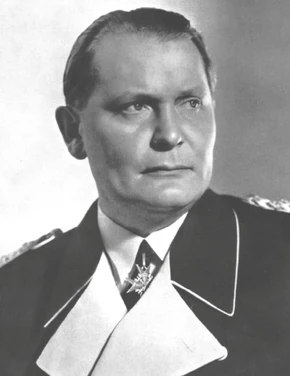Most of what i call "enhanced" or extended or attempted exhausting etymologies i wrote so far are in Romanian and for a good reason. They really need them because of the chaos in dictionaries and hierarchically directed misinformation for the public by the academics themselves. And i got them ready anyways inevitably from the process of assimilating new words. But is English much different in that regard?
Let me make myself clear. I am not a linguist. But in the process of learning and using English while looking at dictionaries i can't help but compare words to the ones i know from Romanian and other languages . Some are semantically close but have totally different definitions. Some have similar definitions but write and pronounce totally different.
Why etymologies. Because the etymological definitions are a hierarchical and easy way to acquire new words. Instead of simply memorizing words and all the phrases that are being used into, (English after all is a language of phrases not individual words like most languages and can't use them like in Romanian where phrases are arranged totally differently). Etymological dictionaries and etymological method of learning a new language is best because it lets you, instead of memorizing words, just o put then in the right place in a hierarchical tree of words starting with linguistic roots and pick them form their place when needed instead of simply trying to remember a phrase. (Can't help but to mention here a semantic suggestion by the word etymology itself with seems to evocate the acronym ET and the english word mole).
Then after looking i realize that there are more than one definition, many definitions are incomplete and sometimes obsolete and after a while i start to be tempted to come with my own, at the beginning for myself and since that has already happened for a long time now i am willing if not compelled to share.
Here is one example. I just looked in a self proclaimed
online etymological dictionary obviously for gathering information in an attempt to solve the the task chosen by the title of this blog post. Demi is pretty trivial so i tried, just because it's there and it's intriguing, the word dim.
And here are quotes from some of the results. "Perhaps". "Not known outside Germanic [languages]".
Linguistics is far from being an exact science. Though language is the only thing that binds us together. And suddenly came in mind the newly discovered by me today syntagm. "Free Negro Bond". No. Unfortunately language for most of us today is only a mean of tricking and hiding things. We rely mostly on different type of social cohesion. Social, (not linguistic) hierarchy. Though we pretend not to.
About 200 years ago a new linguistic theory emerged trying to... well, finally starting to turn linguistics into a science (Maybe because it was the first modern complex theory in the field of communications marked by lack of reliable interconnections between languages). A theory called Indo European Theory which stipulates a link between European and Indian languages that of course implies migrations and contacts not previously known or acknowledged. That Eurasian continent is not divided by the Caucasus Mountains, Caspian and Black Sea, etc. It is a continuous, gradually changing cultural whole with far more important links between East and West. And how could it had been different?
More than that. It seems that Sanskrit is the only known language that encompasses them all. Sanskrit in India is known to be thousands of years old, probably all the way to the war described in Mahabharata that apparently took place about 3700 years BC and beyond.
"Mikhail Lomonosov compared different language groups, including Slavic, Baltic ("Kurlandic"), Iranian ("Medic"), Finnish, Chinese, "Hottentot", and others, noting that related languages (including Latin, Greek, German and Russian) must have separated in antiquity from common ancestors."
https://en.wikipedia.org/wiki/Indo-European_languages#History_of_Indo-European_linguistics
However, though universally accepted, the theory has never been put in practice. That is there is not one single Sanskrit etymology in the dictionaries i know of. Not direct, not through Latin and Greek. In other words, theory is dead since its birth. And i have a few explanations for it.
First, it implies Russian is a language related to all European languages. Then the heresy that Hindi by example is related to... i don't know, English "perhaps"? Latin and Greek being descendants of a language still spoken natively in small parts of India, Indonesia and Malaysia and other Southern Asian countries and being the liturgic language for Hinduism? And last but not least, the more common, "incorrect" or "countryside" style of Romanian has the most unmodified Sanskrit words of any known European language and probably comparable to Hindi?
Because of that. It is very difficult for someone to work at an etymology so important trying not to neglect Sanskrit without raising a number of hypothesis and let the reader to choose or decide what scientists should have been done longtime ago. But i will still try because of the last part of the word and the definition from Wikipedia.
"In the Platonic, Neopythagorean, Middle Platonic, and Neoplatonic schools of philosophy, the demiurge (/ˈdɛmiˌɜːrdʒ/) is an artisan-like figure responsible for fashioning and maintaining the physical universe." Intriguing and motivating enough? No? Than think of the root
ur present at the end of the word that seem to come from what the historians call today "The birthplace of civilization" [slavery based civilization that is]. Most known to us from the word ziggurat, which again has the same root in it though not so stated in the definition.
https://en.wikipedia.org/wiki/Ziggurat_of_Ur
But let's filnally bring up the definition from Wikipedia:
"The word "demiurge" is an English word from demiurgus, a Latinized form of the Greek δημιουργός or dēmiourgos. It was originally a common noun meaning "craftsman" or "artisan", but gradually it came to mean "producer", and then eventually "creator".
https://en.wikipedia.org/wiki/Demiurge
But what... Google Translate has to say about the Greek word demi or dēmi?
My GT though cookies was setup to Hungarian. With the last phrase of the second paragraph of the Wikipedia page about the Ziggurat of Ur (the Palace of
Ur-Nammu (the E-hursag)
. and even the name of Hungary in their language, Magyarorsag, where orsag means country, i tried by some sort of intuitive urge the word or the root named above, ur, in Hungarian, or Magyar as it is called by themselves and here is the result.
https://translate.google.com/#hu/en/ur
Got into deeper trouble with my little etymology that seem to get even further from being finished that i thought at the beginning. I'm not going to go much into that direction except to mention that some Hungarian scholars agree that one of the main source of Magyar language is Sumerian. Here are
a few more words from Hungarian. And
a few words from the neighboring... Romania.
Quite... the opposite of Hungarian?
Ok. Now let's get back to demi. Which by the way is part of another, closely related word, demigod and another one closely only semantically, demagog. In both, the component demi and dema have a totally different meaning than in demiurge. Not even trying to talk about democracy.
Though all these words starting with dim are supposed to be composed of Greek words, two of them don't even have a correspondant in modern Greek. For the other two we can see clearly the root dim which supposedly means people in Ancient Greek.
https://translate.google.com/#en/el/demiurge%0Ademigod%0Ademagogue%0Ademocracy
https://en.wiktionary.org/wiki/%CE%B4%CE%AE%CE%BC%CE%BF%CF%82
One is completed with
kratos. Ok. Here is a first for me. I found a Sanskrit etymology in Wiktionary! Ways to go! Let me the try in Wiktionary... demiurge itself! Nope. No luck here. Demiurge cannot be a craftsman who works for the people, according to the widely accepted definition, that of the creator of the Universe!
https://en.wiktionary.org/wiki/demiurge#Etymology
Calque (loan word) from Latin? Then demi here is just a morphism of semi from Latin back to Greek?
https://en.wiktionary.org/wiki/demigod#Etymology
Here is a better explanation from the origin of demi from demigod.
https://en.wiktionary.org/wiki/dimidius#Latin
Hence the confusion of the first part of demiurge and that of demigod. First is from Greek where it means... people. Second is grecized Latin (yest there is a such word at least in a definition on the web) where it means half.
Apparently we won't be able to solve this if we don't go to Sanskrit. Where we have dhimat, which is a synonym of... bodhisattva ("one who is on the way to the attainment of perfect knowledge")! "
http://spokensanskrit.org/index.php?tran_input=dhImat&direct=se&script=hk&link=yes&mode=3
Could it be in the end demiurge is actually the God of Ur, who actually is an enlightened one? And that is acceptable as hypothesis only if we can get closer to the idea that in the beginning all languages on Earth were really close?
And since in French the word appeared the first time in 1546 In French we can see the word appeared for the first time in 1546
http://www.cnrtl.fr/etymologie/d%C3%A9miurge
And in English in 1670
https://www.etymonline.com/search?q=demiurge
It is still a mystery who created this word if out of Sanskrit and it is possible we will never know its true origin.
Also should mention the Sanskrit
Urja, a possible source for both the word urge and work in English.
And last but not least. Oregon.


























